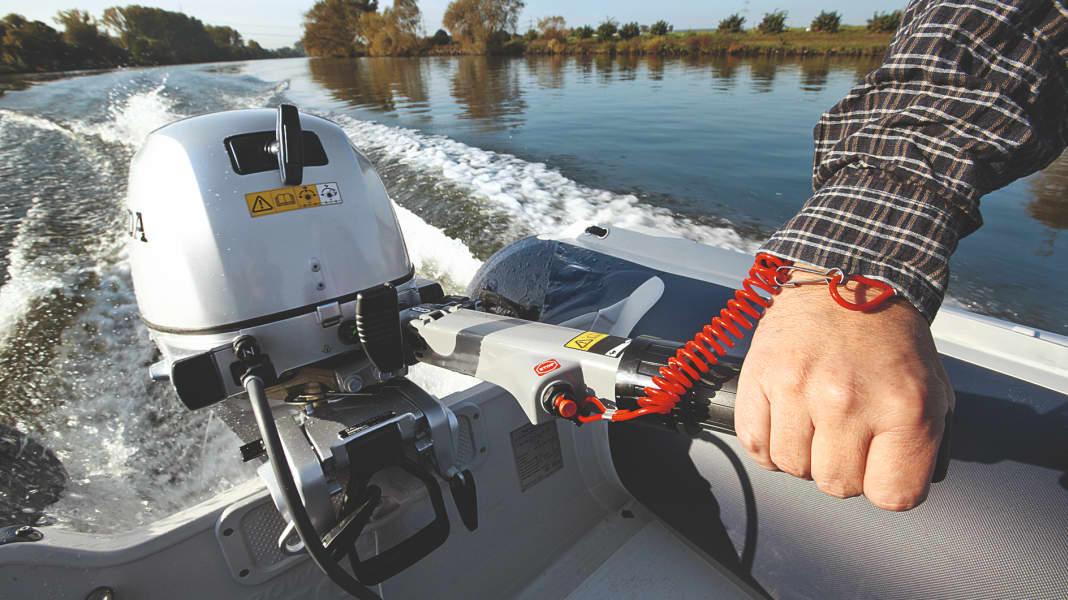
Driving
First things first: boating is not an art. After a few trial rounds every beginner can master the essential manoeuvres. Rule number one is: keep calm. The more calmly you manoeuvre your boat, the longer you have time to adjust to the boat's movements and reactions.
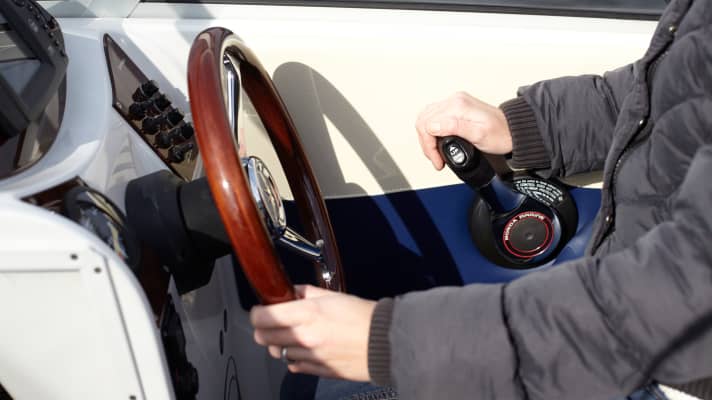
It makes no difference whether you are travelling in a 4-metre inflatable boat or a 10-metre motor yacht. In fact, it often does, that large boats are easier to sail than small ones. So if you can handle your 5-metre cabin cruiser perfectly, you don't need to be afraid of "big pots".
Rule number two: drive with foresight. What we all know from driving a car can also be applied to boating.
In practice, it is better to take the throttle off too early than too late. As a general rule, a boat reacts much more slowly than a car due to the water resistance, and this must also be taken into account when steering.
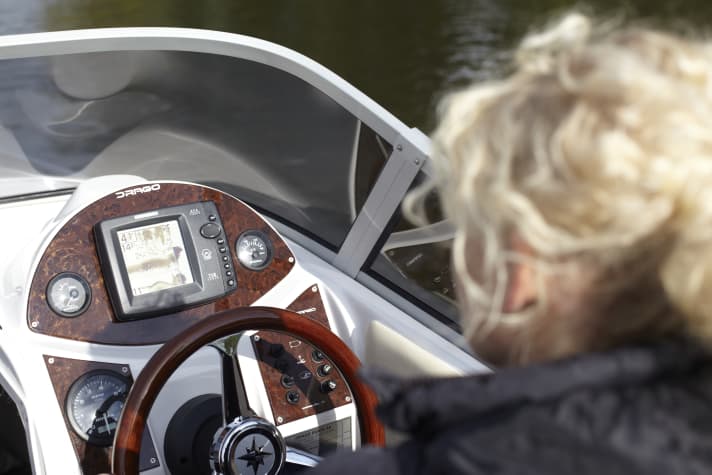
So don't be surprised if you turn the steering wheel and the boat only reacts after a few seconds. Common beginner's mistakeBecause the boat does not immediately move in the desired direction, you turn the steering wheel even harder.
The result: the boat suddenly turns far too sharply. If you now try to "catch" it again by frantically counter-steering, you often overdo it again and end up with a unintentional zigzag course. The speed at which a boat reacts to the driver's steering commands depends largely on the throttle position.
If you turn the steering wheel and accelerate at the same time, it will change direction much more spontaneously than at idle.
The same applies when reversing. Here, too, the boat must first be manoeuvred away from the mooring by briefly engaging and disengaging the engine. Unlike cars, which are steered via the front axle, outboard
outboard boats steer via the stern. This is particularly important when mooring and casting off. Conversely, this characteristic can also be utilised.
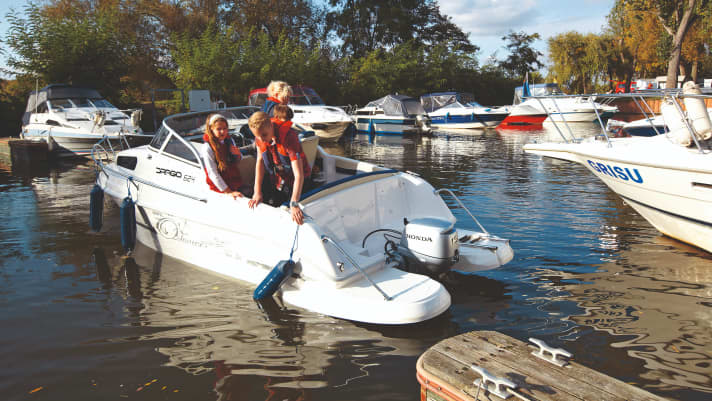
In particularly narrow Mooring or unmooring situations it can be advantageous to drive the boat out backwards instead of forwards as usual. Because the stern immediately follows your steering commands, it is much more manoeuvrable than the bow (the tip) of the boat.
Stop
Another important point is braking, which experts refer to as stopping the boat. In contrast to land vehicles boats have no brakes. In practice, a motorised boat slows down noticeably as soon as you reduce the throttle due to the comparatively high water resistance. Once the boat has slowed down, you can bring it to a complete stop by engaging reverse gear.
But be careful: if you shift into reverse at full speed without thinking, not only your crew but also the transmission may suffer.
To put it plainly: foresighted planning also plays a major role when braking and stopping the boat. When in doubt, drive rather a little slower to the mooring. This will save you time and you will have no problems bringing the boat to a halt. A few hours of sailing experience is usually enough to get used to the "braking behaviour" of your own boat.
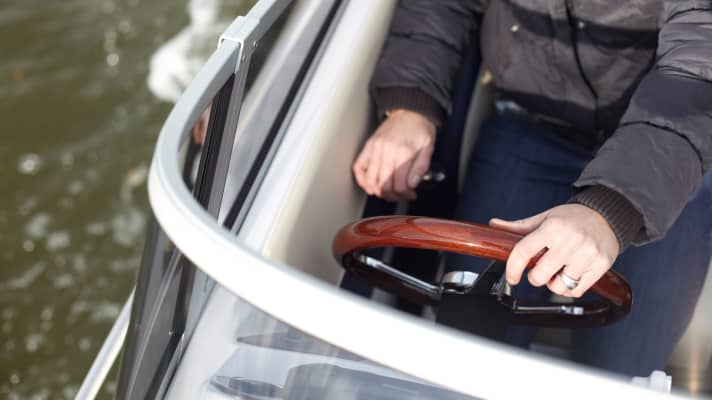
What's more, unlike on the road, there is usually very little traffic behind you. And even if there is, don't let yourself be rushed. Boating is a leisure activity and not a race.
Shafts
Let's move on to the topic of waves, or rather swell. Although you hardly ever have to deal with real swell on beginner areas such as rivers, canals and lakes, you should still be prepared for it. Larger motorboats in particular can cause waves of up to half a metre in height.
The same applies here: keep calm. The easiest way to take waves is by travelling slowly at a 90-degree angle.
If you see them coming, you usually still have enough time to slow the boat down and align the direction of travel (course) head-on to the wave. The Hull shape of each boat is designed so that the bow deflects the water to the side. Boats with a flat bow and without a windscreen, such as inflatable boats, may still let some water in.
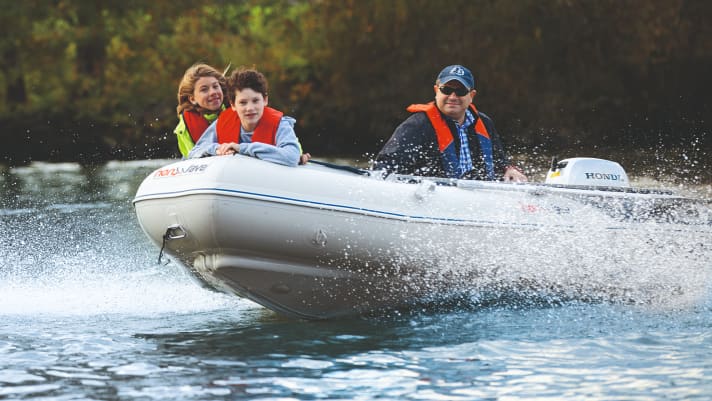
But don't worry, this will only get your feet wet. Should it happen that you see the wave too late, or if it is too late for other reasons Not at the optimum angle there is also no danger. In most cases, the boat will then lie slightly on its side for a short time. However, once the wave has passed, it returns to its normal position just as quickly.
All in all, it can be said that motor boating purely a matter of practice and experience and does not present anyone with unsolvable problems. If you are still unsure, you should take a beginner's course at an appropriate boating school.

